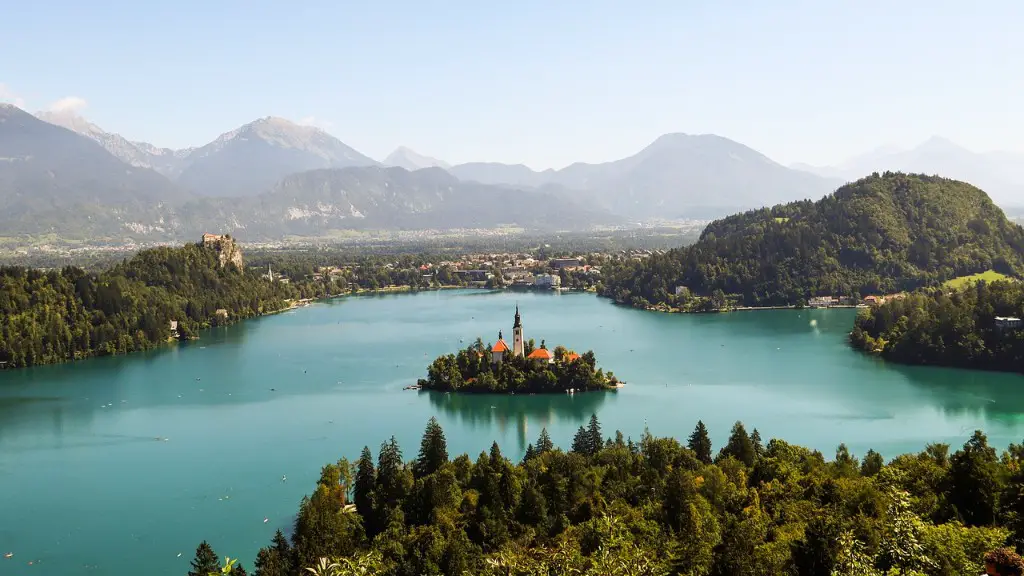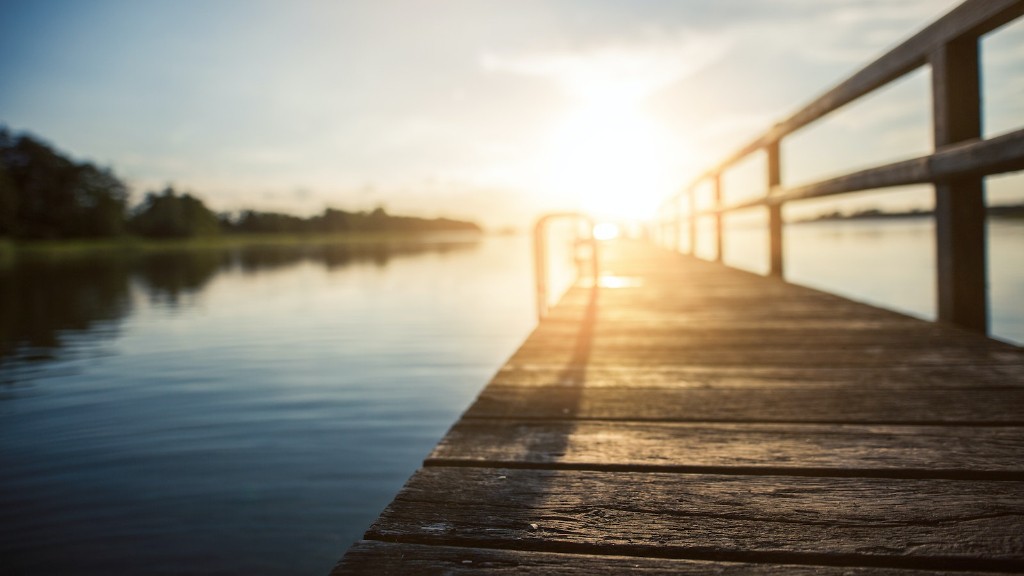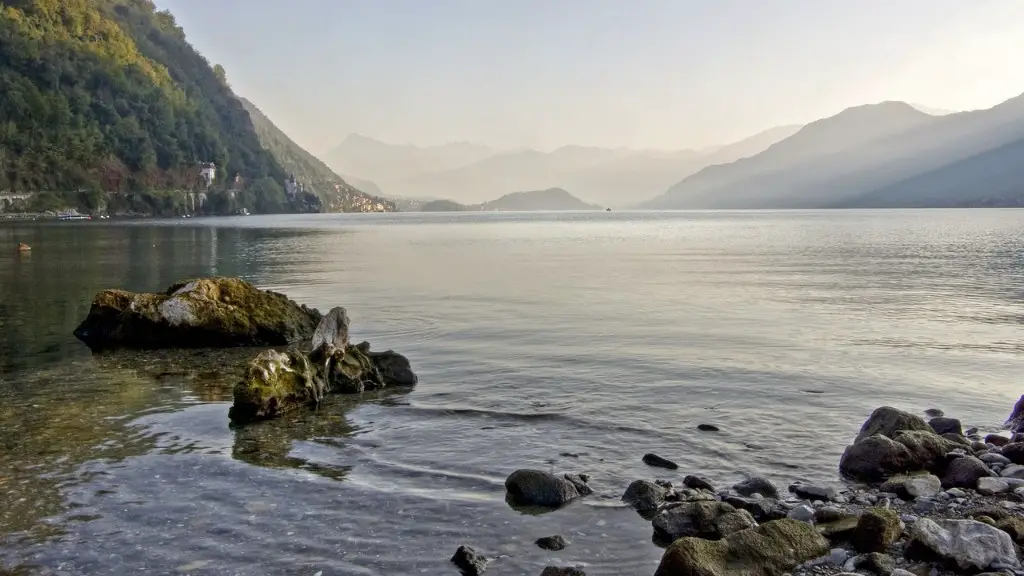Overview
Lake Superior is the largest freshwater lake in the world and its temperature can vary throughout the year. Depending on the season it can range from near freezing in the winter to temperatures that make it possible to take a dip in the summer. In this article, we explore when Lake Superior is typically the warmest and the factors that influence its temperature.
Temperature and Climate
Lake Superior’s water temperature is influenced by air temperature and the amount of sunlight the lake receives. In winter, the water temperature is colder than the air temperature and the lake is typically covered with ice. When summer arrives, the air temperature increases and the lake begins to warm faster than the air. This is because water absorbs and holds onto more heat than air does. Depending on the month and the location, the lake water can average anywhere from 35 to 68 degrees Fahrenheit (1.7 to 20 degrees Celsius).
The Warmest Months
In general, the warmest months for Lake Superior are July and August. During the summer months, the lake warms up quickly due to the warmer air temperatures and longer days of sunlight that provide more heat energy to the lake. However, this can vary depending on the location within the lake and the weather conditions. For example, in some locations along the shore the water can average up to 70 degrees Fahrenheit (21 degrees Celsius). On the other hand, the northern regions of Lake Superior can stay quite cold due to the colder air temperatures.
Factors Impacting Lake Temperature
Apart from air temperature and the amount of sunlight, there are various factors that influence Lake Superior’s water temperature. One of the most significant factors is the amount of rain that falls across the lake. Rainwater runoff from rivers and streams that flow into the lake can increase the water temperature by adding warmer water. Additionally, warm water can also be picked up from around the areas surrounding the lake. The weather conditions at the time can also affect the temperature. For example, strong winds from the south are known to increase the temperature of the lake by bringing warm air to the lake surface.
Significance of the Lake’s Temperature
The temperature of Lake Superior has significant implications for the environment, the wildlife and local communities that depend on the lake for their livelihood. Warmer temperatures mean an increase in the lake’s nutrient levels which can fuel the growth of algae, potentially leading to water pollution. In addition, warm temperatures can create an ideal environment for certain species of fish to thrive while affecting the survival rates of other species. For local communities, warm lake temperatures can boost lakefront tourism and economic activity while also posing health risks.
The Impact of Climate Change
Climate change is having a profound influence on Lake Superior’s water temperature. As global temperatures continue to increase, so too is the surface temperature of Lake Superior. Warmer temperatures can lead to an increase in the lake’s nutrient levels which in turn can cause toxic algae blooms and water pollution. Additionally, as the lake temperature continues to rise, fish and other aquatic organisms may be forced to migrate to cooler waters, potentially disrupting local ecosystems and the species that depend on them.
Preservation Efforts
In order to protect the lake from the consequences of climate change, it is important that we implement effective conservation and preservation efforts. This includes protecting the lake’s delicate habitats and ecosystems, reducing runoff from rivers and streams, and limiting the impact of human activities on the lake. Additionally, efforts should be made to reduce global greenhouse gas emissions in order to reduce the rate of global warming and its impact on the lake.
Eco-Tourism
Lake Superior is a gorgeous natural wonder and a popular tourist destination. Surrounded by lush forests, it is a paradise for hikers, boaters, and campers. With warmer temperatures, the lake is an attractive site for fishing, swimming, and kayaking, while also hosting a wealth of wildlife. By visiting and participating in the various activities the lake has to offer, eco-tourists can help to raise awareness and protect this unique body of water.
Effects on Local Communities
Lake Superior has a large and diverse population that relies heavily on the lake for their livelihoods. It is also an important source of water for many cities, towns and villages. Warmer lake temperatures can bring positive economic effects such as increases in fish stocks and tourist activity, but also pose risks such as water pollution and health hazards for local communities.
Infrastructure
In order to protect the lake from the impacts of climate change and other human activities, it is important to have measures in place to monitor and manage the lake. This includes the installation of infrastructure such as dams, aerators, and water quality monitoring systems. Additionally, lake stewardship programs that educate local communities on the importance of preserving Lake Superior are also an important component of a comprehensive lake management plan.
Conclusion
Lake Superior is a stunning natural body of water that is home to a variety of wildlife and local communities that depend on it for their livelihood. As climate change impacts the lake’s temperature, it is important that we implement relevant measures to protect the lake and its inhabitants. This includes reducing runoff from rivers and streams, limiting human activities, and installing infrastructure such as dams and water monitoring systems to manage the lake’s health. Ultimately, it is up to us to take the necessary steps to protect this precious resource and ensure its survival for future generations.


